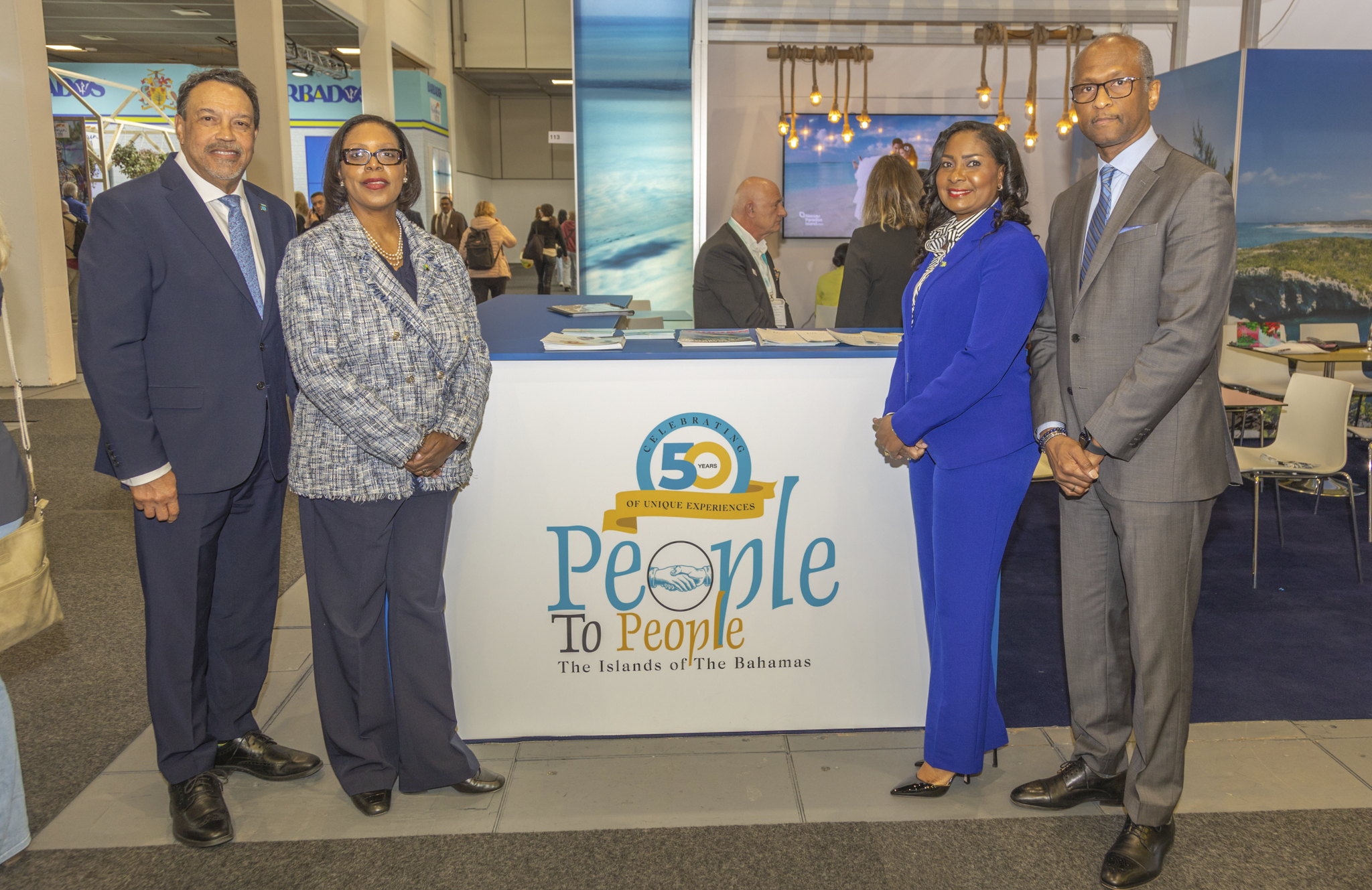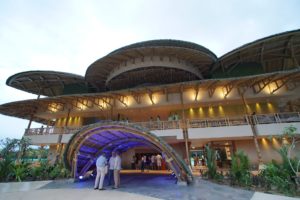Search Results for747
EVA to retire Boeing 747s in August
EVA Air's Boeing 747-400 aircraft EVA Air's last Boeing 747 aircraft will be retired in August. The 372-seat, three-class aircraft is the largest passenger jet in EVA's fleet, but these aging jets are gradually being replaced by newer, more fuel-efficient models. EVA’s last remaining 747 will take off for the final time on 21 August 2017, on the route between Taipei's Taoyuan International Airport and Hong Kong, marking a major milestone in the airline’s fleet renewal process. These four-engined aircraft have been gradually removed from service in recent months and years, and replaced by EVA's expanding fleet of twin-engined 777-300ERs and Airbus A330-300s. The airline also has outstanding orders for 24 787 Dreamliner aircraft, including 20 787-10s - the largest version of the new fuel-efficient jet. Several other Asian airlines have retired their 747s in recent years, including Cathay Pacific, Singapore Airlines, Malaysia Airlines and Japan Airlines. Boeing has produced a new, more fuel-efficient version of the 747, but it has not proven popular with passenger airlines.
EVA Air to retire Boeing 747s this year
EVA Air's Boeing 747-400 aircraft EVA Air is accelerating the retirement of its Boeing 747 fleet, bringing forward the scheduled date of the final flight from October to August 2017. The Taiwanese carrier currently operates three 747-400 aircraft, which are still the largest in its fleet with a total of 372 seats in three classes. But these are being gradually replaced by new long-haul jets, including the Boeing 777-300ER. As a result, EVA's final 747 flight will operate between Taipei and Shanghai on 20 August. EVA's long-haul fleet renewal programme will continue in the coming years when it starts taking delivery of its new fleet of Boeing 787 Dreamliner aircraft. Like many current and former 747 operators, EVA has decided against buying the new version of the aircraft, the 747-8 Intercontinental.
37 dead as Boeing 747 crashes in Kyrgyzstan
The aircraft was operated by ACT Airlines, a Turkish cargo carrier A large cargo plane crashed in Kyrgyzstan on Monday morning, killing at least 37 people. The incident occurred when the Boeing 747 aircraft, operated by Turkey's ACT Airlines, crashed while landing at Manas airport, 25km north of the Kyrgyz capital, Bishkek. The flight had taken off from Hong Kong. The wide-body jet left the end of the runway and crashed into houses in a village located next to the airport. At least 15 buildings are reported to have been destroyed. In a statement, ACT Airlines said the aircraft had crashed for "an unknown reason", but freezing fog was reported at the airport at the time of the incident. Boeing said it was ready send a technical team to Kyrgyzstan, if requested by the investigating authorities.
Imbibing the wonder of accessible ‘Smart City’ travel
Shanghai cityscape reflection at night on the Bund The Global Accessibility Index selects the highest-rated cities from the 2025 IMD Smart City Index to reveal the most accessible smart cities. As summer travel ramps up, the importance of accessible cities takes centre stage. With millions of people planning vacations, festivals, and outdoor events, ensuring that urban spaces are accessible for individuals with disabilities is essential. With this in mind, the organisation behind the Smart City Expo World Congress event has revealed the 25 most accessible smart cities to demonstrate if smart cities are, in fact, accessible. Experts selected the highest-rated cities from the 2025 IMD Smart City Index and then analysed if residents receive support to adapt their homes, the number of adapted tube stations, the number of accessible tourist attractions and the number of adapted hotels and properties. In addition, the analysis also shares the apps available for those with disabilities so they can move around the city as freely as possible. The top 5 most accessible smart cities Shanghai, China In first position and with an overall score of 84.86 out of 100 is Shanghai. All tube stations of Shanghai are adapted, with a further 733 adapted tourist attractions; that’s 73% of all attractions in the city. On top of that, the city counts 14 adapted hotels and properties out of 57, making Shanghai one of the best cities to visit freely and without any obstacles this summer. Singapore, Singapore Singapore is in second position with an overall accessibility score of 81.50 out of 100. Singapore offers its citizens economic support so they can adapt their homes to their needs. Also, if you are looking to discover this new city this summer season, 100% of the city’s tube stations are adapted (185), Singapore offers 217 adapted attractions out of a total of 796 and 97 adapted hotels and properties out of 321 available to enjoy. Last but not least, those visiting Singapore can download the app Citymapper to move around the city with all the information and support they might need. Wellington, New Zealand Wellington, the capital of New Zealand, secures a spot in the top three with an overall accessibility score of 79.12 out of 100. This stunning city is the perfect spot for those who want to enjoy nice weather and scenic views of the most amazing beaches. Wellington has a total of 49 stations, all of them adapted. Moreover, 35 out of its 132 hotels and apartments are adapted. Last but not least, the city offers 38 adapted tourist attractions, making this city one of the perfect places to visit this summer. Munich, Germany In fourth position, with an overall score of 78.92 out of 100, is the German city of Munich. For those who love to experience the Gothic architecture, this is your perfect destination; Munich has all 100 tube stations adapted, allowing visitors to move freely around the city. 75 out of its 359 hotels and apartments are also adapted, providing several options to choose from. And with almost 42% of its tourist attractions being adapted (317 out of 747), this European city becomes a great option looking to escape over the summer. Amsterdam, The Netherlands Rounding out the top five with an overall accessibility score of 76.51 is Amsterdam, the second European city to appear in the Global Accessibility Index. Amsterdam offers a perfect combination for those who want to enjoy the cafes and restaurants of the city, while also appreciating the culture and art the city has to offer. Amsterdam has 86 tube stations, all of them adapted, and 53% of its tourist attractions are adapted (533 out of 1,000), making Amsterdam a great choice for this summer. Those visiting the city are recommended to download the app Ongehinderd to move more easily and freely around the city. The 25 most accessible smart cities The 25 top smart cities, according to the IMD Index, show solid sustainability scores, ranging from Shanghai with 84.86 points to London with 42.59 points. Most of the cities feature accessible subway networks, equipped with ramps and elevators to eliminate architectural barriers, along with visual and tactile aids to support individuals with visual or cognitive disabilities. They are also actively working to improve the accessibility of their main tourist attractions and accommodation options. Providing subsidies for home adaptation is also a widespread practice across these cities.
Thailand launches ‘LOCO(AL) Working Space’ Campaign
A Mangrove Forest in Ban Bang Rong Village, Phuket Thailand is redefining the remote work experience with the launch of the ‘LOCO(AL) Working Space’ campaign, inviting digital nomads, remote professionals, and creative minds to immerse themselves in authentic Thai communities while maintaining global connectivity. Supported by the Tourism Authority of Thailand, this initiative transforms traditional work environments by offering unique “SPACE TONES” that blend emotional value with local authenticity. Whether it’s the serene mountains of Chiang Mai, the cultural alleys of Bangkok, or the tranquil islands of Phuket, Thailand presents curated environments that foster productivity, inspiration, and well-being. Naka Yai Island, Phuket Chiang Mai: Valley Space Nestled in Northern Thailand, Chiang Mai offers a harmonious blend of tradition and modernity, making it a haven for digital nomads. Beyond the city’s vibrant co-working spaces and artisan markets, remote workers can retreat to peaceful mountain communities such as: Mae Klang Luang: a serene village nestled in the Doi Inthanon National Park, it offers a peaceful retreat where visitors can immerse themselves in the simplicity of rural Thai life. The village is famous for its lush terraced rice fields, vibrant flower gardens, cool climate, and the home of Karen tribe. Mae Mae: is a lesser-known slice of Chiang Mai, known for its peaceful vibe, lush green hills, authentic local life, and its growing in eco-tourism. It’s all about slow mornings with local coffee, homestays run by families who genuinely care about the land, and walking trails that feel untouched. Mae Mae is hidden gem offering immersive experiences in nature and local traditions Mae Sa Noi: is a quiet, scenic corner of Chiang Mai known for its serene waterfalls, lush forest trails, and local elephant experiences. Unlike tourist-heavy spots, it offers a more natural, intimate vibe and the chance to see elephants bathing in the Mae Sa Noi stream. It’s a favorite for those seeking a relaxation retreat into Chiang Mai’s green heart, where nature feels personal and unfiltered. In the city, co-working spaces like Alt_ChiangMai and Alt_PingRiver provide fully furnished accommodations and shared amenities, creating environments that seamlessly merge comfort and community. Rice field terraces at Mae Klang Luang, Homestay Chiangmai, Thailand Bangkok: Classic Space Thailand’s capital is a dynamic metropolis where history and modernity coexist. In the heart of the city lies Trok Dilokchan, a cultural alleyway that bridges heritage and contemporary lifestyles. Here, digital nomads can explore century-old architecture, enjoy coffee in restored shophouses, and discover co-working spaces filled with character. Phuket: Island Space For those dreaming of working with the sound of waves in the background, Phuket offers idyllic island settings: Ko Lon: Ko Lon has a laid-back vibe where you can find quiet beaches, friendly locals, and a slower pace that helps you focus and recharge. The island is known for its crystal-clear waters, stunning coral reefs, and fresh seafood—ideal for unwinding after a productive workday. Ko Lon offers the perfect balance of work and escape; it keeps you productive without feeling plugged in to the chaos of city life. Ko Naka Yai: just a 15-minute boat ride off the east coast from Phuket, known for its secluded location, and glassy bay. The island’s tiny size means you’ll know every hidden cove and cliff-top view by sunset. With no crowds or traffic to slow you down, Ko Naka Yai lets you work at your own pace—then reward yourself with uninterrupted nature, all within steps of your bungalow. Make this tranquil slice of paradise your base for productivity and play. In Phuket Old Town, colonial architecture meets trendy cafés and art-filled streets, providing remote workers with a colorful, creative space to call home. The campaign is anchored in the “5 Must Do in Thailand” experience pillars, encouraging nomads to not only work remotely but to truly live locally. From tasting regional dishes and trying age-old crafts to buying community-made goods, exploring nature, and seeking inner peace, each destination invites nomads to craft a personalized lifestyle aligned with their values.
SOTC Travel enters Chhattisgarh market with first outlet in Raipur
SOTC Travel has inaugurated its first franchise outlet in Raipur and in the state of Chhattisgarh, reiterating the Company’s strategic focus to expand its retail footprint across India. Chhattisgarh is emerging as a strong source market for the Company’s holiday business and is witnessing promising travel demand with Raipur and its surrounding catchments being key growth drivers. SOTC’s new franchise outlet is strategically situated in the city center, to serve both leisure and business segments. The Raipur outlet offers end-to-end travel solutions with an array of services, including International & Domestic Holidays (Group tours, Personalized Holidays, Cruises, etc.); Value Added Services like Travel Insurance; Visa Services, etc. Raipur/Chhattisgarh Travel Trends Top destinations: International: Europe, Australia-New Zealand, Singapore, Malaysia, Vietnam, Egypt and South America Domestic & Indian Subcontinent: Ladakh, Andaman Islands, Sri Lanka & Bhutan Unique preferences: high interest in experiential holidays such as witnessing Northern Lights in Norway/ Scandinavia/ Murmansk, black water rafting in New Zealand Holiday duration has increased from 3 days to 5 - 8 days for short trips; from 5 days to 10 -15 days for longer trips Strong demand for spiritual journeys and darshans: Ayodhya, Char Dham, Varanasi, Prayagraj Top traveller segments: Multi-generational families, couples, Young India’s millennials & GenZ, GenS (seniors) and working professionals Rakesh Bawa - Senior Vice President & Head - Holidays, SOTC Travel Limited said: “Chhattisgarh is strongly emerging as a viable source market for SOTC and we are witnessing promising demand from the region. Hence, we are delighted to announce the opening of our first franchise outlet in the city of Raipur. The new outlet is centrally located and allows us to target valuable segments of families, millennials, business owners, Gen Z and seniors. Over our 75 years as a company, we firmly believe that, ‘No one understands the Indian Traveler better than SOTC. And we look forward to welcoming our Raipur customers designing their perfect holidays.
Phuket Dining Festival 2025 hailed as a resounding success
The Tourism Authority of Thailand (TAT) has declared that the recently concluded Phuken Dining Festival 2025 was a success worth celebrating. Indeed, the festival brought together top local restaurants and leading food and beverage brands in a showcase of sustainability, creativity, and culture. Held on 30th and 31st May, the event was organised by the events team of Tatler Thailand with support from TAT TAT deputy governor for marketing communications Nithee Seeprae said of the festival: “Phuket Dining Festival 2025 was a shining example of how Thailand can lead the way in sustainable tourism. By highlighting Green Gastronomy and Responsible Tourism, this initiative not only celebrated the richness of local cuisine but also reinforced our commitment to meaningful, community-based travel experiences. We are proud to support events that elevate Thailand’s position on the global stage while promoting long-term sustainability.” Interweaving sustainability and luxury The festival responded directly to the rising demand for conscious travel experiences. Backed by partners including Evian, Jagota, PRAKAAN, PHRAYA, Ruang Khao Siam Sapphire, as well as Phuket establishments BaBa Lee, Heh, hom, Jaras, KHAAN, Royd, Samut, Su Va Na, and Tamarind, the event demonstrated the strength of collaboration in advancing sustainable tourism. Phuket’s culinary heritage was reimagined throughout the event by way of Green Gastronomy which promotes mindful consumption, celebrating local ingredients, and supporting community livelihoods. Sustainably scrumptious The festival aimed to reinforce Phuket’s reputation as a world-class food destination while putting the principles of Responsible Tourism into practice. Each restaurant offered bespoke menus that reflected Phuket’s culinary roots while embracing Zero Waste Restaurant practices in alignment with Thailand’s national target to reduce food waste in the hospitality sector. The festival also echoed findings from the Sustainable Travel Study by Expedia Group and Wakefield Research, which show that 69 percent of travellers seek environmentally responsible holidays and 66% want to support local communities. These trends closely align with TAT’s mission to shape a more sustainable and experience-rich future for Thai tourism.
Could robotics change the game in terms of traveller convenience and mobility?
Robotics are getting into numerous aspects of everyday living, from basic housekeeping to handling perilous occupations like construction, and it is no longer surprising to encounter mobilised automation these days. We mentioned in passing during our recent coverage of ITB China how the science of robotics has even made its way into the travel and hospitality sectors, and this is a trend we're opting to keep our eyes on as it holds a great deal of promise for both industries. In today's feature, we present how robotics have become a key part of enhancing the experience for both back-end and front of the house participants in these fields, as well as what future developments may look like in the industry. Japan's Hen na Hotels chain has used humanoid robots in their concierge services for years. Current uses in constantly evolving sectors At present, aside from digital bots or artificial intelligence (AI) agents developed to interact with users online, the application of robotics in travel and travel-adjacent businesses has been as diverse as the machines currently in use. In a report updated in March of this year by online travel resource site Revfine, practical applications for robots include: Security handling Site security, especially in high-density areas like air and sea ports as well as attractions, is enhanced by the use of patrolling robots which can detect and report unusual activity in real time; Delivery services Smaller robots are deployed throughout wide spaces to bring orders directly to guests, minimising human contact which is key in these pandemic-conscious times. Such technologies have also been used, as above at ITB China, to ferry items like newspapers or bottles of drinking water across wider expanses. such as those in large-scale exhibition halls, to facilitate quick and efficient distribution; Housekeeping Related to the previous item, the use of robots in housekeeping ensures that human workers are not so frequently exposed to potentially contaminated items. Many housekeeping robots are used to keep floors clean at malls, attractions, and restaurants, but these may also be used to collect refuse from various areas, collate used dishes and cutlery, and bring these to the correct facilities for either cleaning or disposal. We have seen such technologies in action at the Philippines’ larger shopping malls as well as hotels belonging to the Sands Group in Singapore and Macau; Concierge services This is already in active use in Japan where the Hen na Hotels chain deploys humanoid or whimsically-configured robots to their front desks to make checking in or out easier for customers. The only downside we see, however, is what happens if there’s a glitch in the programming or when a power failure hits; and Luggage handling While more commonly deployed at the world’s larger and more state-of-the-art airports, luggage handling robots take much of the guesswork out of sorting and handling baggage to be either stowed for later collection or checked into the cargo hold of a plane. We have also seen smaller devices, similar to ITB China’s newspaper-ferrying robo-pups, in use at hotels to carry luggage to rooms in lieu of a human bellhop or attendant. In the future, those with limited movement could actually go on walking tours without needing to rely on bulky personal mobility equipment. Potential developments for future use Over the past decade, the use of personal mobility devices (PMDs) has become more widespread, especially in countries with a rapidly ageing population like Singapore, China, and Japan. These motorised wheelchairs or miniaturised four-wheel vehicles enable those who cannot walk long distances or are physically incapable of walking to explore their surroundings without needing to stumble about with crutches or canes, or even being pushed around by an attendant. But as convenient as these are, they also pose a high risk of injury to the user and older models built before the electric vehicle revolution may be considered environmental hazards due to emissions. It should also be noted that the use of such PMDs is now regulated in Singapore due to the reckless use on the part of numerous users, regardless of their age or state of immobility. Advances in cybernetics, the synthesis of robotics and human interaction, could provide a solution in the form of mobility solutions that could mimic healthy movement, thereby enabling users to participate with minimal intervention. At the moment, such advances are directed towards the use of the upper limbs and, even then, are still too bulky for everyday use. However, with the rapid pace of innovation, we will not be surprised if such technologies along with further advancements in robotics become available in the none too distant future.
Bahamian People-to-People programme marks its golden anniversary
This year, The Bahamas' beloved People-to-People programme celebrates its 50th anniversary, marking half a century of fostering meaningful connections between visitors and Bahamian locals. First launched in the 1970s, the initiative offers travellers a unique and immersive way to experience Bahamian culture, built around authentic exchanges, from home-cooked meals to personal storytelling and local traditions. As of end-2024, more than 10,000 visitors have engaged in the programme, forging bonds that go far beyond the typical tourist experience. It should be noted that over 85 percent of People-to-People ambassadors have developed lasting friendships with their guests, demonstrating the programme's emotional and cultural impact. According to People-to-People programme coordinator Bernadette Bastian: “We remain committed to deepening the connection between travellers and our communities. This initiative not only enriches the visitor experience through authentic cultural exchange but also empowers Bahamians, supports sustainable tourism, and preserves the heart of our heritage.” Indeed, the People-to-People Programme transforms a holiday into a heartwarming cultural exchange that leaves travellers with lifelong memories and a deeper connection to the Bahamas. There’s never been a better time for UK holidaymakers seeking something special. Why the People-to-People programme allows The Bahamas to Offer So Much More Authentic Cultural Immersion: Through the People-to-People Programme, travellers are welcomed into the daily lives of Bahamians, gaining insight into the islands' rich history, culture and traditions in a way guidebooks can't match. Unmatched Hospitality: Visitors are treated like family, not tourists, enjoying heartfelt moments and meaningful connections with their hosts. Sustainable, Community-Based Travel: Over 30% of hosts now include eco-friendly practices such as waste reduction, sourcing local ingredients and promoting environmental awareness, highlighting the programme's commitment to responsible tourism. Support for Local Economies: This initiative directly supports local artisans, small businesses and hospitality providers, helping tourism make a lasting, positive impact. Join the 50th Anniversary Celebrations: A series of special events, from cultural festivals to storytelling evenings, will run throughout 2025, providing visitors with unforgettable, immersive experiences. How to get into the programme Visitors can book the People-to-People programme by registering online through the official website. Once registered, a representative will email to match guests with a suitable local host. It's recommended to register at least two weeks in advance to allow time to find the perfect match, though last-minute requests can often be accommodated. The programme is available across nine islands, including Nassau, Exuma, Eleuthera, and The Abacos. Once confirmed, guests will receive their host's contact details to connect in advance. The best part is that the programme is completely free of charge, thanks to the generosity of over 800 certified ambassadors and the continued support of the Bahamas Ministry of Tourism.
AIME 2026: 9–11 February 2026 | Melbourne, Australia
Where the business events world meets in Asia Pacific The Asia Pacific Incentives and Meetings Event – AIME – is
IWTA Awards 2024 cont.
Photos from the Inspiring Women in Travel Awards 2024, held at Intercontinental Bangkok
Inspiring Women in Travel Awards 2024
Photos from the Inspiring Women in Travel Awards 2024, held at Intercontinental Bangkok
Photos from Travel Daily’s Inspiring Women in Travel (Asia) 2023 Awards
Check out the photos from our amazing event
January 2023: Pattaya – GEMS Mining Pool Villa & Resort
THIRSTY THURSDAY PATTAYA JANUARY 2023 PROUDLY SPONSORED BY
December 2022: Phuket – Angsana Laguna Phuket XANA Beach club
THIRSTY THURSDAY PHUKET DECEMBER 2022 PROUDLY SPONSORED BY
Maximum Occupancy 2022: Sheraton Grand Sydney, 5-6 April 2022
Maximum Occupancy is Australia’s premier hotel and accommodation industry conference, designed for and by the hotel industry's leaders. Suited for all types of hotel and accommodation providers and sizes, it will feature over 35+ leading industry experts and speakers from around Australia and the globe. This is THE event for any hotelier that wants to achieve maximum occupancy month after month.
How does a night of luxury including breakfast for 2 sound??
In conjunction with Westin Grande Sukhumvit, TD is giving you the opportunity to experience a night of luxury just by answering this one simple question



















